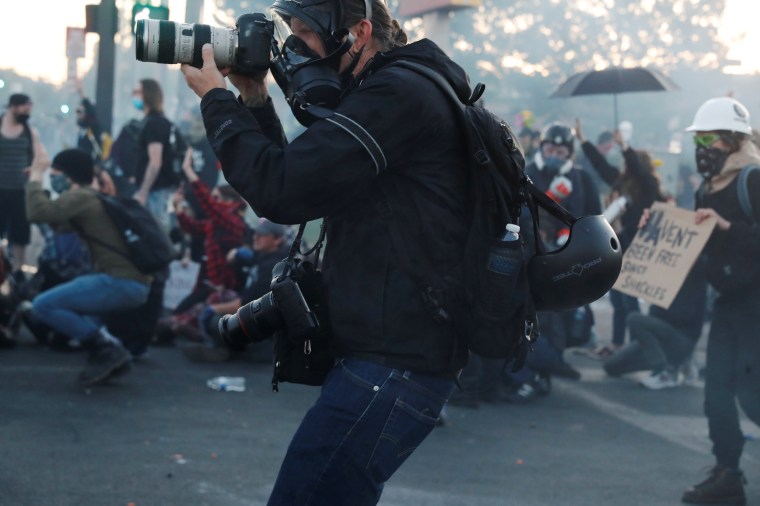Updated June 8, 2020
The following checklist enables commissioners and editors to understand how well prepared journalists and other media workers are as they cover U.S. protests over police violence.
For additional safety information, please see CPJ’s Safety Advisory for covering U.S. protests over police violence.
Select your staff after considering:
- Have they covered violent protests before?
- Do they have a history of good decision making under pressure?
- Can you assign a co-worker so no one works alone?
- Bear in mind that their ethnic/gender profile may increase their risk of harm, and plan accordingly
- Have they recently attended a course appropriate for this coverage?
- Do they have local knowledge or access to local knowledge of the protest location?
As part of your risk assessment, discuss:
- A check-in schedule with yourself, or desk
- The material you require. There is no point lingering at a protest gathering material that will not be used
- The expected threats and how to mitigate them (dynamic risk assessment)
- What indicators to look for to trigger a withdrawal of the team
- Have you securely recorded the emergency contacts and details of all staff being sent on the assignment?
Does your team have the following equipment?
- Correct personal protective equipment (PPE), including ballistic goggles, protective helmet, respirator and canisters?
- Correct COVID-19 PPE: N95 face mask, disposable gloves, and hand sanitizer?
- Basic first aid pack?
- Power chargers and back-up phone?
- Water and snacks?
- Adequate footwear/clothes with no company badges or logos?
Remind your team to:
- Not wear expensive jewelry
- Work out a safe evacuation route, and rally point if separated
- Conceal broadcast equipment until needed (where feasible); try and blend in
- If possible, report from a safe position such as a vantage point (balcony, building window)
- Take particular note of police and crowd tactics; are they changing?
- Always maintain good situational awareness; and constantly reevaluate exit routes
Prepare your team in terms of digital security:
- Ensure that they know their rights around having devices seized and searched
- Keep in mind that the authorities are able to record phone location and other metadata as well as intercept SMS messages
- If possible, journalists should avoid carrying their personal phone and carry instead a phone that has minimal information on it
- If using a personal phone or a phone that has a lot of personal identifiable information on it, users should delete personal information such as photos and contacts, and log out of and remove apps from the phone
- Encryption should be turned on for all devices
- Location settings should be turned off for all devices
- Ensure that all devices are locked with a passcode rather than biometrics
When discussing the risk of arrest, consider:
- Reminding the team to have press credentials readily accessible when police ask for them
- Having legal counsel on stand-by and sharing counsel’s contact with the team
When deploying staff, consider the COVID-19 risk and pay particular attention to the following questions:
- Does any journalist on the team fall into a higher risk category of vulnerability to COVID-19?
- Is any journalist residing with anyone from the higher risk category? Do they have any dependents living elsewhere, such as elderly relatives?
- Have you discussed insurance, medical cover, and sick pay should the journalist contract the virus?
- Is a contingency plan in place should they fall ill, or end up in a quarantine/lockdown zone for an extended period of time?
- Please see CPJ’s Editor’s Checklist for preparing for COVID-19 assignments for more information
CPJ’s online Safety Kit provides journalists and newsrooms with basic safety information on physical, digital, and psychological safety resources and tools, including covering civil unrest. If you need assistance, journalists should contact CPJ via emergencies@cpj.org.
Click here to download a printable version of this checklist.
